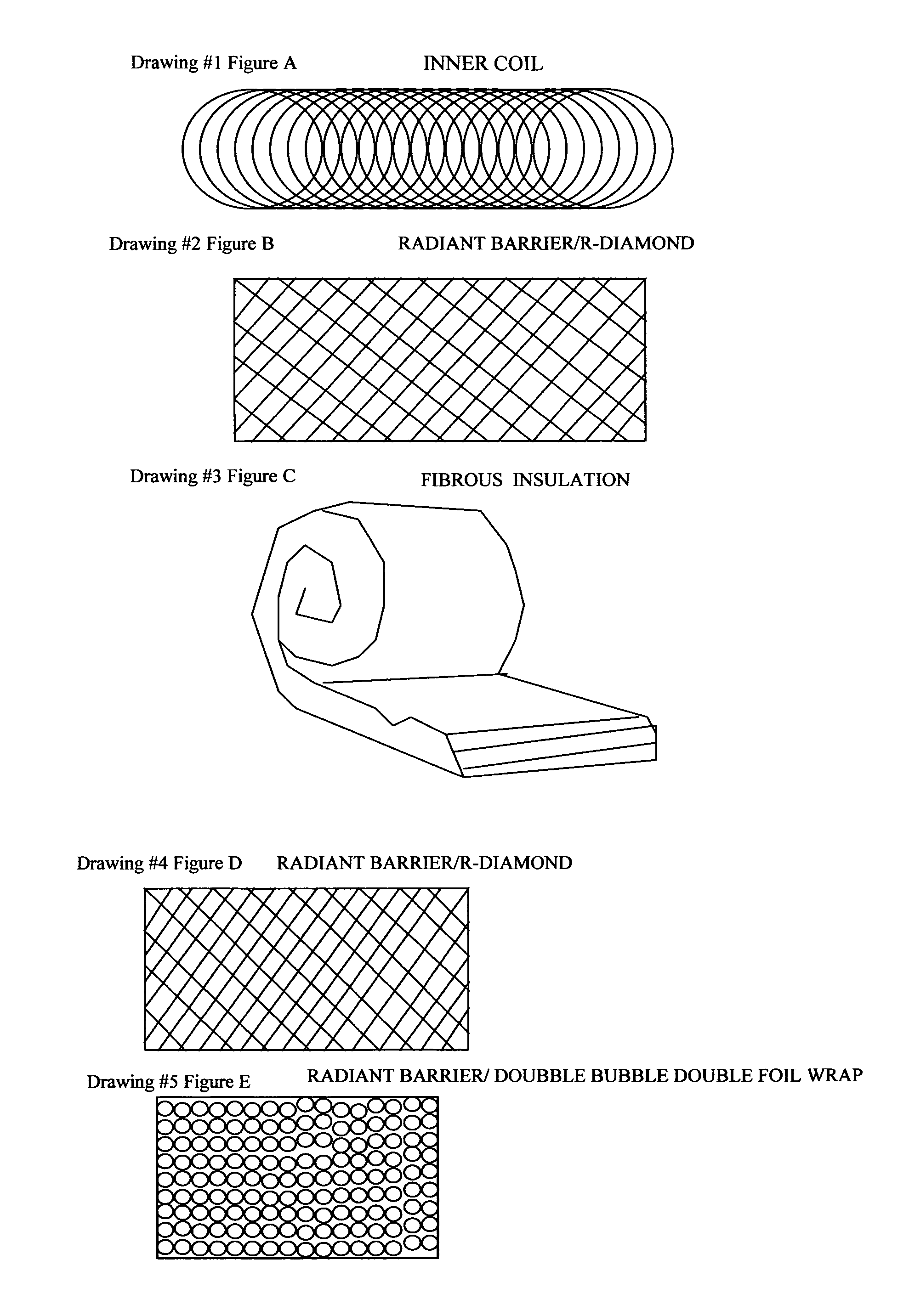Low emissive radiant barrier flex (LOW-E FLEX)
a radiant barrier and low emissive technology, applied in the field of low emissive radiant barrier flex (lowe flex), can solve the problems adding a layer of less permeable and less penetrated material to the outer coil, etc., and achieves the effect of reducing heat loss/gain and reducing heat transfer
- Summary
- Abstract
- Description
- Claims
- Application Information
AI Technical Summary
Benefits of technology
Problems solved by technology
Method used
Image
Examples
Embodiment Construction
[0017]Energy efficient Low Emissive Flex is flexible duct made with a radiant barrier inner core to reduce amount of fibrous insulation and / or decrease the heat gain / loss associated with air distribution through flex.
[0018]The inner core is comprised of an alumifoil, radiant, metallic sheet around the traditional metal coil to form a radiant barrier lined duct for air distribution.
[0019](Manufacture) When referring to drawings Drawing #1 FIG. A wrapped with Drawing #2 FIG. B to form a flexible tube known as the inner coil.
[0020]The inner coil is then wrapped with a thin layer of fibrous insulation, r-value and thickness would be determined by desired over all r-value requested, or desired.
[0021](Manufacture) Using Duct / Tube inner coil from above, refer to Drawings. Encapsulate, (or wrap) inner coil with Drawing #3 FIG. C leaving the two ends open (keeping it a tube shape). R-value is usually determines by the thickness of this layer. (Please refer to research and reference page mark...
PUM
 Login to View More
Login to View More Abstract
Description
Claims
Application Information
 Login to View More
Login to View More - R&D
- Intellectual Property
- Life Sciences
- Materials
- Tech Scout
- Unparalleled Data Quality
- Higher Quality Content
- 60% Fewer Hallucinations
Browse by: Latest US Patents, China's latest patents, Technical Efficacy Thesaurus, Application Domain, Technology Topic, Popular Technical Reports.
© 2025 PatSnap. All rights reserved.Legal|Privacy policy|Modern Slavery Act Transparency Statement|Sitemap|About US| Contact US: help@patsnap.com


